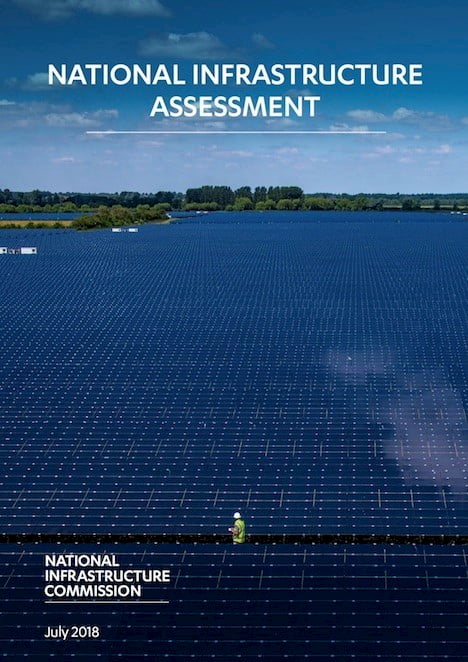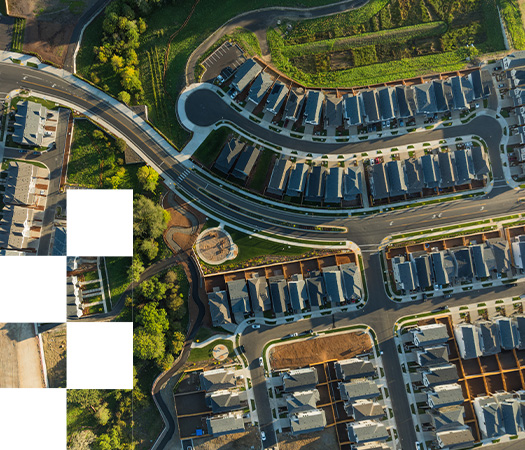Where is the where in the NIA?
emapsite CEO James Cutler looks at the 'geo' (or lack of) in the National Infrastructure Assessment published today.
It’s good to see a detailed report being published by the National Infrastructure Commission today – but I’m a little underwhelmed. The NIC was set up to examine and then address the lack of an infrastructure strategy; siloed decision making in every sector; and an environment that promotes (in its own words) “fragile political consensus and short termism”, as a strategy.
It had long-term objectives in mind and the report does talk about a cross-sectoral approach. However, the report in itself is a disappointment – using only two maps (figures 5.2 and 5.4) for reference (on flood and drought resilience respectively). This is extraordinary for a document that’s underpinning the ‘what and the where’ for our nation’s next 30 years of infrastructure delivery and maintenance.
With that in mind, we probably shouldn’t be surprised there’s no reference to the role for high quality, accurate, and current location data in delivering and maintaining the nation’s infrastructure. But with the Geospatial Commission also gathering momentum, I think we’d all rather anticipated a few more inter-Commission nods towards the value of geospatial information.
- In its views on building a digital society, there’s a focus on high speed broadband for every property in the UK, but there is no definitive list of addresses and their UPRNs.
- In its plans for a low cost, low carbon environment, there’s no reference to EPC data resources or the air pollution data sets that inform uptake of ‘clean’ interventions on the one hand, nor to the scope for spatial visualisation technologies that could support planning and effective delivery of energy.
- In terms of ‘revolutionising’ road transport – there’s a strong focus on charging points for electric vehicles (and predictions of close to 100% electric new car and van sales by 2030), but absolutely no mention of the spatial impacts from a full CAV revolution. The kinds of infrastructure needed, for example; the impact on emissions; journey times; land use or parking/CAV storage to name but a few uses for location data.
At least in the first phase of a revolution in electric vehicles, the NIC could have recommended the use of spatial tools to better help us to plan for that future – charging points, uptake rates/postcodes, overlays of the grid and so much more. How will the data be sourced/shared? Who will verify that data and publish the information?
- For ‘thriving city regions’ the die is seemingly cast. There’s a somewhat ironic absence of a national and regional vision to deal with, for example, over-heating of London and its South East hinterland; the impacts on amenity value from land use changes, or the opportunities that a wider smart vision might bring on the back of a fibre-optically connected, low-emission, CAV-enabled future. Instead the NIC report is about city leaders developing integrated strategies for transport, employment and housing. Even here, there’s only the scantest reference to the role for ‘smart’ technologies; BIM; an IoT infrastructure that can safely and securely link people, places and processes together. How could the NIC have best communicated its vision for working with stakeholders to ‘unlock growth’ collaboratively? With geospatial information.

- And in resilience planning – there’s a recommendation for organisations to collaborate on reducing the risks of drought and flooding, but no mention of location data in managing assets more effectively.
You get the idea. The NIC seems to foresee a world where the infrastructure providers are incentivised or ‘responding to needs’ rather than playing an active role in shaping the best national outcomes.
Understanding ‘where’ is critical to defining and ensuring support for excellent effective outcomes at national, regional and local levels. There are myriad data sources that stakeholders might be using in the future – as open data, or from local authorities, utility and telco companies, state agencies or, indeed, many other providers who’ll be capturing, conveying and enriching the stepping stones to those outcomes. The NIC report neglects geospatial information, and does so at its peril.
The Commission’s remit covered six infrastructure sectors: transport, energy, water and sewage, flood risk, digital, and waste. Across them all, the NIC said good design should be embedded into the culture of infrastructure planning – saving money, reducing risk, adding value, supporting environmental net gain and creating a legacy that looks good and works well – so I had hoped there’d be at least a nod to location data in this report.
However, I’m confident our customers – who are all stakeholders in delivering this great future – will already know: the NIC’s recommendations will all be easier to implement if they have high quality geospatial information at their fingertips…
James Cutler, Chief Executive at emapsite.com
Latest News

Decoding the OS National Geographic Database: A Game-Changer for Utilities
The OS National Geographic Database (OS NGD) offers utility companies powerful, up-to-date geographic data to improve asset management, risk planning, and sustainability efforts. While adoption has been slow, partners like Idox Geospatial make access and integration easier than ever.
Read Full Article-
Geospatial Expertise for Smarter, Greener Insurance Investments
Read Full Article -
Emapsite.com is now Idox Geospatial Ltd - what this means for you.
Read Full Article
